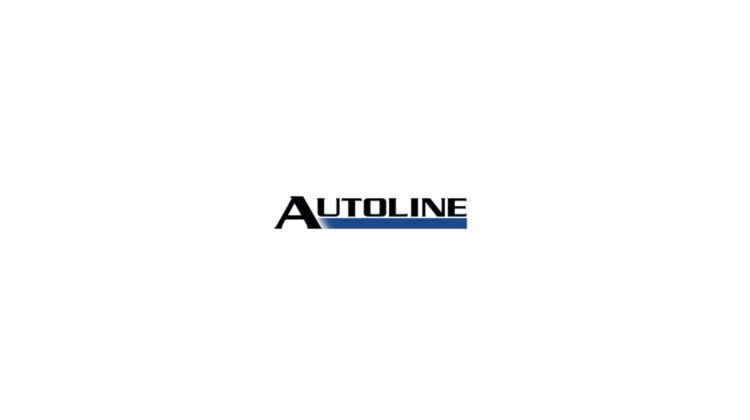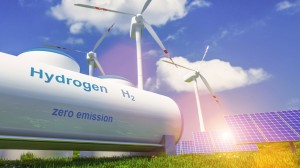
Listen to “AD #3318 – BEVs Hit 10% Market Share in the EU; Using Hydrogen in Diesel Engines; U.S. Inventory Still Falling” on Spreaker.
Follow us on social media:
Runtime: 9:29
0:08 BEVs Hit 10% Market Share in the EU
0:45 BMW Reports Strong Earnings
1:45 STLA Sales Down, Revenue Up
2:14 U.S. Inventory Still Falling
3:50 Toyota Says 800v Only for Big Vehicles
4:35 Fisker Teases Ronin EV
5:25 Electrify America Sees Huge Growth
6:45 Bosch Develops Tech for Green Hydrogen
7:27 Using Hydrogen in Diesel Engines
Visit our sponsors to thank them for their support of Autoline Daily: Bridgestone, Intrepid Control Systems and Schaeffler.
This is Autoline Daily, the show dedicated to enthusiasts of the global automotive industry.
BEVs HIT 10% MARKET SHARE IN EU
Yesterday we reported that EVs doubled their market share in April in the U.S. compared to a year ago. They captured 4.5% of the market. Today, the ACEA, which is the European Automobile Manufacturers Association, said sales of BEVs accounted for 10% of all car sales in Europe for the first quarter. That does not include sales of plug-in hybrids which had 8.9% market share. Europeans bought over 224,000 BEVs in the first three months of the year, compared to 147,000 in the U.S.
BMW REPORTS STRONG EARNINGS
Despite a war in Ukraine, COVID lockdowns that are hurting production, and higher prices for raw materials, automakers keep posting strong earnings. BMW says sales fell more than 6% to 597,000 vehicles. But revenue shot up 16% to €31 billion. And its profit skyrocketed 259% to €10 billion. But there’s an asterisk that goes with that number. BMW increased its holdings in Brilliance Automotive, its Chinese partner, to 75%. It had been at 50%. And that allowed it to book a one-time additional profit of €7.7 billion. But even if you strip out that one-time windfall, BMW’s core profits were up a very strong 19% to €3.4 billion.
STLA SALES DOWN, REVENUE UP
Meanwhile, Stellantis said its sales dropped 12% to 1.3 million vehicles, but its revenue shot up by the same amount: 12%. It brought in more than €41 billion. But because Stellantis only reports its full earnings in the middle and at the end of the year, we don’t know how much money it was able to put on the bottom line. All we know is that Stellantis boosted its revenue in almost every market in the world, except Europe.
U.S. INVENTORY STILL FALLING
Sales of new cars are down all around the world mainly because of tight inventory, and in the U.S. the situation is getting worse, not better. Wards Intelligence reports that automakers and dealers have 1.1 million vehicles in inventory. That’s down from 1.2 million in March. A year ago they had nearly 2 million, and even that was way below normal levels. Some automakers are literally selling cars right off the truck. Hyundai only has an 8 day supply. Mazda only has 7, while Subaru is down to only 3 days and that is the same as Tesla, which works on a direct sales model. At the polar opposite of the spectrum, Mitsubishi has 81 days worth of inventory while Fiat has 127. So if you know anyone who desperately needs a new car and can’t seem to find one, send them to those two. Sounds like they’ve got some cars to sell.
TOYOTA SAYS 800v ONLY FOR BIG VEHICLES
Toyota is on the same page as Tesla when it comes to 800-volt architectures for EVs. Leave it for the bigger stuff. Lexus’ chief engineer says the automaker already developed an 800-volt architecture for future electric vehicles, but it will only be deployed on EVs with larger battery packs because they’re the ones that need faster charging. That’s one of the benefits of higher voltage. A vehicle will have to have at least a 100 kWh battery pack before Toyota or Lexus will consider an 800-volt architecture. So, since the Toyota bZ and Lexus RZ both use a roughly 75 kWh battery that’s why they’ve got a 400-volt architecture.
FISKER TEASES GRAND TOURING EV
Henrik Fisker is once again trying his hand at an electric sports car. First there was the Karma, then the EMotion, which was supposed to get 400 miles of range, have 775 horsepower and cost $130,000. But it never went beyond being just a concept car. Now comes a teaser for the Ronin, an electric grand tourer that’s supposed to deliver the longest range of any production EV from its integrated cell-to-pack battery. But Fisker never said what that range would be. Right now the Lucid Air G holds the title as having the longest range. The EPA rates it at 516 miles. Fisker says the Ronin will go into production in the second half of 2024.
ELECTRIFY AMERICA SEES HUGE GROWTH
Electrify America increased its charging sessions more than five fold from 2020 to 2021. A charging session counts how many times someone used one of its charging stations. Last year people used its chargers 1.45 million times, compared to 268,000 in 2020. That’s a huge jump. Electrify America plans to expand to more than 1,800 charging stations in the U.S. and Canada by 2026, which is 1,000 more than it has today. But we’ve heard mixed reviews about user experiences with EA chargers, so we’d love to know if you’ve ever used them and how did it go for you?
BOSCH DEVELOPS TECH FOR GREEN HYDROGEN
Even though hydrogen fuel cells generate a lot of controversy in some circles, the auto industry keeps on investing in the technology. Bosch is coming out with electrolyzers that convert water into hydrogen through electrolysis. It says these electrolyzers are perfect to use with solar panels and wind generators to produce green hydrogen. Interestingly, the electrolyzer uses the same kind of stack that’s used in a fuel cell, except that it works in reverse. Whereas a fuel cell combines hydrogen and oxygen to produce electricity, the electrolyzer uses electricity to split water into hydrogen and oxygen.
USING HYDROGEN IN DIESEL ENGINES
Meanwhile, Westport Fuel Systems out of Canada, is demonstrating how hydrogen can be used as a fuel in heavy-duty diesel engines. It claims a 98% reduction in CO2 emissions using green hydrogen, a 20% gain in horsepower and torque, and 5% to 10% better thermal efficiency. Westport says this is a much cheaper solution to reduce CO2 emissions compared to battery electric or fuel cell vehicles. And it’s probably right. The only problem is that now we have to wait for someone to build out the infrastructure for getting green hydrogen.
WILL ENOUGH PEOPLE BY BEVs?
As we mentioned at the top of the show, EVs keep capturing bigger chunks of market share. And we expect that to continue as automakers come out with more electric models that appeal to a wider spectrum of customers. And as the charging infrastructure gets built out. But at some point we think the growth will start to plateau. And then what? Will enough people buy EVs to soak up all the capacity that the industry is putting in place? After all, we know that around 40% of the market hates EVs and thinks they’re stupid. Is that where the EV revolution will stall out? That’s the topic on Autoline After Hours this afternoon. Stephanie Brinley the principal analyst for the Americas for S&P Global, as well as Mike Jackson, the head of research at the OESA, will be lending their expertise and insight, so join me and Gary as we look into what it’s going to take to get enough people to buy electric cars.
And that brings us to the end of today’s report, thanks for watching.
Thanks to our partner for embedding Autoline Daily on its website: WardsAuto.com
Seamus and Sean McElroy cover the latest news in the automotive industry for Autoline Daily.






![[RONIN] TEASER_05-03_C-FINAL](https://www.autoline.tv/journal-wp-content/uploads/2022/05/RONIN-TEASER_05-03_C-FINAL-300x180.jpg)

